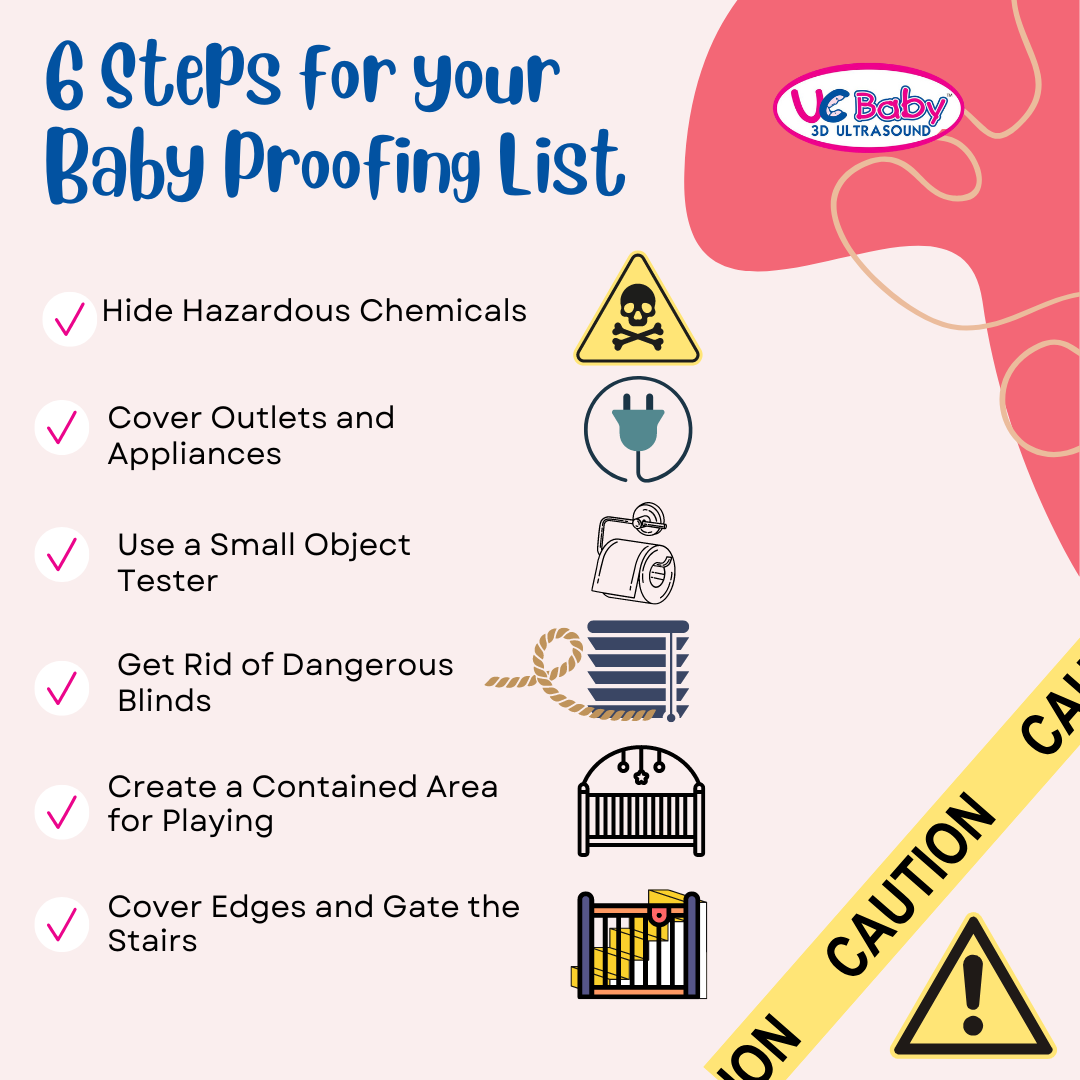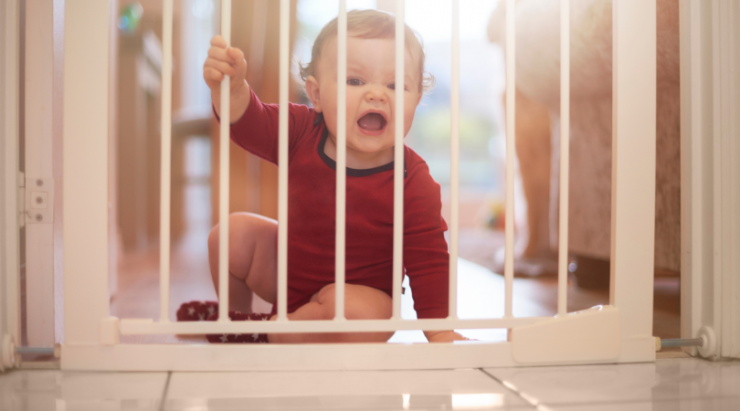Baby Proofing requires attention to detail. Children love to explore and discover new things. Unfortunately, a lot of things babies are curious about can hurt them.
It is important to anticipate this danger and plan accordingly before babies can move around on their own. Take note of the important hazards that should be addressed for your baby’s safety.
Watch Video: Babyproofing Your Home for Your Little ExplorerBaby Proofing Your Home
1. Hide Hazardous Chemicals
Babies, unfortunately, don’t know the difference between substances we can eat and drink and substances we can’t. Hiding these dangerous substances or placing them out of reach means you don’t have to worry about your baby accidentally ingesting them as they are exploring.
2. Cover Outlets and Appliances
Covering outlets may seem like a no-brainer. Babies love to touch the dangerous holes in the wall. And parents need to protect their tiny fingers. You should also cover knobs on your stove and only use backburners when cooking. If you have a lot of loose kitchen appliances, it may be a good idea to place them way up high so babies can’t reach, so remove them from countertops.
3. Use a Small Object Tester
Experts say using a toilet paper roll to test small objects to see if they are choking hazards is a good idea. If an object can fit into the toilet paper roll, it must be kept out of the baby’s reach. The baby’s space should be free of minor choking hazards, including the car.
4. Create a Contained Area for Playing
At some point, a parent will have to do something besides watch their child like a hawk. Activities like chores and cooking will have to be done at some point. Creating a soft area such as a playpen or blanketed section of a room is a perfect way to keep babies in one place while you do other things.
5. Get Rid of Dangerous Blinds
Parents sometimes forget that kids can reach chords attached to blinds or climb on furniture to get to them. These chords are a choking hazard and should be removed before they become problematic. There are safety devices to tuck away cords or ropes if they must be kept.
6. Cover Edges and Gate the Stairs
Gates and bumpers are probably parents’ most important and common safety precautions. While babies are zooming around, they rarely consider the sharp edges they can bump into or the stairs they can fall on. It’s important to cordon off the stairs and round the edges in their paths.

While you cannot remove all danger from your baby’s life, this list is a great start to making your environment safer.
REFERENCES:
Baby Proofing Checklist: Before Baby Comes Home
How to baby proof your house: 13 baby proofing tips and products
Childproofing Your Home: 6 Spots to Tackle
Written by: Gabrielle Goldson
Check out our blog – Babyproofing Basics and Preventing Accidents





 Invitez familles et amis à assister à cet événement mémorable de votre grossesse. Célébrez avec vos proches où qu’ils soient dans le monde ce moment spécial de lien avec l’enfant.
Invitez familles et amis à assister à cet événement mémorable de votre grossesse. Célébrez avec vos proches où qu’ils soient dans le monde ce moment spécial de lien avec l’enfant. Rien n’est plus beau que les battements de cœur de votre bébé. Enregistrez ce son pour toujours dans un Ourson Coup de cœur de UC Baby®. Il ne s’agit pas simplement d’un beau souvenir, mais aussi d’un moyen efficace qui apaise votre bébé pour l’aider à s’endormir.
Rien n’est plus beau que les battements de cœur de votre bébé. Enregistrez ce son pour toujours dans un Ourson Coup de cœur de UC Baby®. Il ne s’agit pas simplement d’un beau souvenir, mais aussi d’un moyen efficace qui apaise votre bébé pour l’aider à s’endormir.

